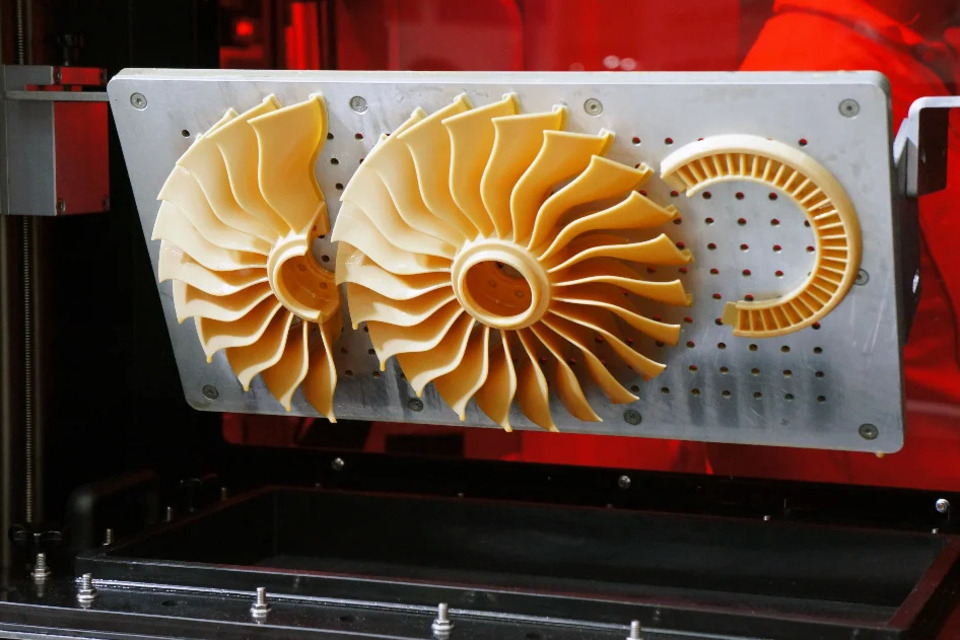You've probably heard about additive manufacturing, but do you know how it's revolutionizing the aerospace industry?
This revolutionary technology is changing the way aircraft components are designed and manufactured. Additive manufacturing allows for faster production times, superior quality parts, and unprecedented design flexibility.
It's no wonder why many aerospace companies are investing heavily in this innovative technology!
Ready to learn more? Let's dive into how additive manufacturing is revolutionizing the aerospace industry.
Overview of Additive Manufacturing in the Aerospace Industry

You may be wondering how additive manufacturing is revolutionizing the aerospace industry - let's take a look!
Additive manufacturing (AM) is transforming the aerospace sector by providing cost-effective and efficient production solutions. It does this by utilizing 3D printing technology to manufacture components from metal, plastics, and even composites. This process also allows for smaller parts with complex geometries that would be impossible to produce using traditional methods.
With AM, manufacturers can create lighter parts which help reduce costs and improve the performance of aircrafts. Additionally, AM has reduced lead times significantly compared to traditional processes, allowing manufacturers to quickly respond to changing market conditions.
As a result, the aerospace industry stands to benefit greatly from AM's advantages in terms of cost savings and improved efficiency.
Benefits of Additive Manufacturing
Adopting 3D printing technologies offers numerous advantages to the aerospace industry, including a reduction of up to 90% in production time. By taking advantage of this innovative technology, companies can reduce their production costs and increase efficiency.
Not only does additive manufacturing help businesses save money and time, but it also reduces environmental impact by eliminating the need for hazardous materials such as solvents and paints. Furthermore, additive manufacturing allows aerospace manufacturers to create complex parts that were previously impossible or too expensive to produce traditionally. This makes it possible to create lightweight components that are more durable and efficient than ever before.
With all these benefits, it's no wonder why many leading aerospace companies are turning towards 3D printing technologies as a way to stay competitive in an increasingly globalized market. Ultimately, additive manufacturing is revolutionizing the aerospace industry with its impressive capabilities and cost-efficiency.
Design Considerations
When it comes to 3D printing technologies, there are several important design considerations you must keep in mind to ensure a successful outcome. You need to understand the limitations of the technology and be aware of how different materials behave when printed.
Different types of 3D printers may require specific material properties for optimal results. Additionally, you should also consider the desired product's size and shape, as well as details such as surface finish or strength requirements.
Furthermore, when designing parts for additive manufacturing, it's essential to create a digital file that can be manipulated with CAD software and then converted into instructions for the 3D printer. The complexity of this process will vary depending on the type of printer being used but is necessary for producing accurate components with consistent quality.
With careful consideration of these points before production begins, you can achieve superior results using additive manufacturing processes in aerospace applications.
Manufacturing Processes

3D printing is revolutionizing the way aerospace parts are made, transforming traditional manufacturing processes. Instead of relying on complex machinery and a long assembly line, 3D printing gives manufacturers the ability to create intricate structures from lightweight materials with just the press of a button.
This means that aerospace parts can be created quickly and efficiently, while also allowing for greater customization and design flexibility than ever before. From fuel nozzles to engine components, additive manufacturing is being used in virtually every aspect of aerospace production.
Thanks to its speed and precision, 3D printing has become an invaluable tool for improving performance and reducing costs in aircraft design. With its continued growth in popularity, it's clear that this revolutionary technology will continue to revolutionize the aerospace industry for years to come.
Testing and Certification
Testing and certification of 3D printed aerospace parts have become increasingly important, as they ensure the safety and reliability of these revolutionary components.
Various organizations, such as the Federal Aviation Administration (FAA) and the International Aerospace Quality Group (IAQG), have developed standards for testing and certifying 3D printed aerospace parts.
These standards are designed to evaluate the mechanical properties, chemical composition, functionality, and performance of the parts before they can be used in an aircraft.
Rigorous tests must be conducted on prototypes to determine their durability under extreme environmental conditions, such as temperature or humidity changes.
After successful completion of these tests, production-level components must also undergo additional levels of certification to guarantee their reliability in air travel.
All this is necessary to ensure that 3D printed aerospace parts provide passengers with a reliable and safe experience when flying!
Examples of Additive Manufacturing in Aerospace

Additive manufacturing is transforming the aviation sector with its ability to quickly produce complex components for aircraft. Its potential to reduce weight and complexity in aerospace design has made it a valuable tool for engineers and designers.
From landing gear parts to turbine blades, the technology can be seen in an ever-growing variety of applications:
- 3D printed fuel nozzles which can withstand higher temperatures than traditional metal designs
- Titanium parts that are lighter and more structurally sound from selective laser melting
- Carbon fiber reinforced plastic parts with complex geometries that couldn't have been achieved through traditional production methods
- Lightweight cabin interiors produced using thermoplastics
- Components manufactured onsite instead of offsite, reducing time delays and cost.
These examples demonstrate how additive manufacturing is revolutionizing the aerospace industry. By allowing for faster development cycles and optimizing part performance, it's improving safety standards while also boosting efficiency.
In doing so, it allows us to explore new possibilities in space exploration and aircraft design as we push boundaries further than ever before.
Challenges of Additive Manufacturing
While additive manufacturing is revolutionizing the aerospace industry with its unique ability to create complex components, there are some challenges that remain. You may be wondering what these challenges are and how they can be addressed.
The first challenge of additive manufacturing is the cost of materials and equipment. As this technology is relatively new, it's more expensive than traditional methods. Additionally, the quality control process for 3D printed components requires specialized knowledge and resources that can be costly.
The second challenge relates to safety regulations as 3D printed parts must pass rigorous tests before they're allowed in aircrafts. This makes it difficult for manufacturers to keep up with changing regulations and standards in the aerospace industry.
Fortunately, these two challenges can be addressed by investing in research and development projects to improve the cost-effectiveness of additive manufacturing processes, as well as collaborating with government agencies on creating reliable safety protocols for 3D printed parts.
Future of Additive Manufacturing in Aerospace
You're probably thinking that 3D printing is pushing the boundaries of engineering, but it's not just revolutionizing the sky - it's completely transforming the aerospace industry!
Not only can aircraft parts be made faster with additive manufacturing, but they can also be lighter and stronger than ever before. The possibilities for exploration in space are endless as well, thanks to 3D printing's ability to produce objects on-demand without needing a factory or assembly line.
In addition, components made with additive manufacturing have increased durability and reliability compared to those produced using traditional methods. The potential applications for this technology are enormous; from creating entire spacecrafts to producing intricate tools needed for maintenance, 3D printing is changing the way aerospace engineers design and manufacture their products.
What's more, this groundbreaking technology is enabling companies to reduce costs while achieving higher levels of precision and accuracy in their designs. Many experts believe that 3D printing could even replace traditional fabrication methods entirely in the future.
With its countless advantages over existing technologies, additive manufacturing is set to revolutionize not only aerospace engineering but also every other industry that relies on prototyping or mass production.
Conclusion
You've seen how additive manufacturing is revolutionizing the aerospace industry. From rapid prototyping to complex design considerations, AM presents a whole new world of possibilities for the aerospace industry.
It's estimated that by 2027, the market size of AM in aerospace will be worth over $5 billion! This just goes to show that AM isn't just a passing trend; it's here to stay and will continue to shape the future of aerospace for many years to come.
So now's the time to get onboard with this revolutionary technology and benefit from all it has to offer!
